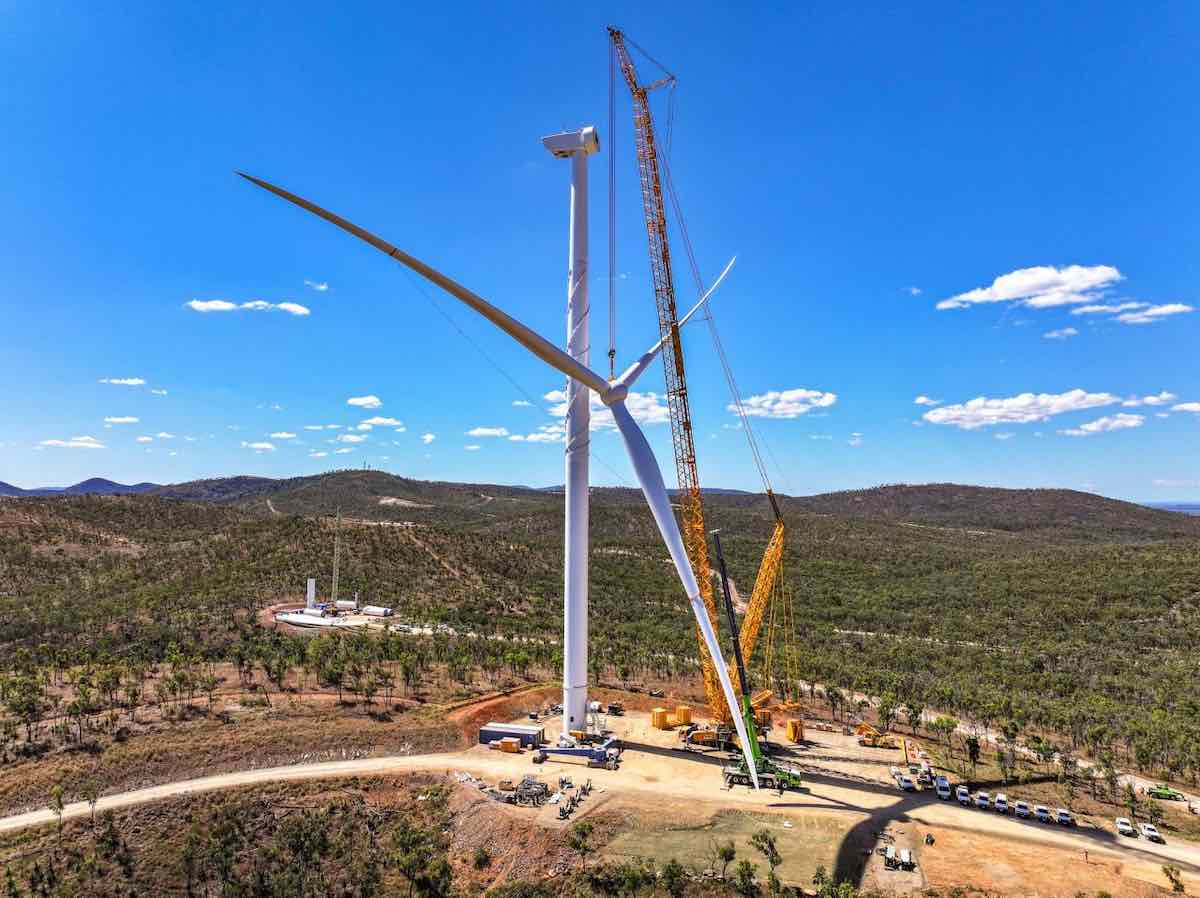The energy industry has reacted warmly to federal energy minister Chris Bowen’s huge underwriting plans for wind, solar and storage, although there are still questions about transmission, social licence and the treatment of households. And some still want gas.
Bowen’s commitment to auction 32GW of new capacity by 2027 was enough to help Origin Energy postpone its shareholder meeting and consideration of a $20 billion Brookfield bid to see what is in it for them.
Another of the big three utilities EnergyAustralia, also reacted positively – clearly seeing a line of sight on getting finance for some of its big storage projects, such as the Wooreen, Hallett and Mt Piper battery systems, its reshaped Lake Lyell Pumped Hydro project.
“We look forward to engaging with governments to progress these capacity projects – this is one way we enable more renewables to enter the system,” CEO Mark Collette said in a statement.
Andrew Forrest’s Squadron Energy, which also has a stated goal of building 12GW of new renewables, said the move was provide certainty and boost investor confidence to move at the pace needed to meet the government’s 82 per cent renewable energy target.
“Replacing ageing and unreliable coal-fired generation with firmed renewable energy is key to bringing affordable, reliable and clean electricity to Australian households and businesses,” CEO Jason Willoughby said in a statement.
Willoughby said Squadron is determined to deliver one third of the federal Government’s renewable needs, but he also broke from party lines by declaring his interest in gas – despite Forrest’s repeated demands that the world move away from fossil fuels, and his own target of “real” zero emissions by 2030.
“We believe gas will still play a small but important role in the clean energy transition and remain committed to delivering a major pipeline of renewable energy projects backed up by a combination of battery energy storage systems and gas firming projects designed with a hydrogen future in mind,” Willoughby said.
Elsewhere, the response was more predictable.
Rewiring Australia described it as a strong step in the right direction, but said household electrification remains the fastest, cheapest way to meet emissions targets.
That’s because the household sector relies only on existing, off-the-shelf technology like rooftop solar, batteries, electric vehicles, and hot water heat pumps meaning it can be swiftly deployed.
The Greens, meanwhile, took credit for the policy by pointing out there role in the formulation of ACT 100 per cent renewables plan, which became a leader for the sought of contracts that Bowen’s policy will be based on.
“The federal government is taking the renewable energy supercharging model developed by the Greens/Labor government in the ACT and rolling it out nationally,” said Greens leader Adam Bandt.
“But with every step forward that Labor takes with renewables, they’re taking two steps back by approving new coal and gas projects. It’s not enough to approve clean energy, you have to stop approving coal and gas as well.
“Labor needs to stop gaslighting the public by spruiking renewables while also opening new coal and gas mines.”
The Australian Energy Council, which represents the legacy energy industry and the gas sector, warned of the risks of injecting so much new capacity into a grid “with unresolved system constraints.”
“These include delays in transmission deployment, social licence issues, supply chain bottlenecks and the challenge of maintaining essential system services as more renewables come online,” said AEC chief Sarah McNamara, a former lobbyist for AGL and policy advisor to then prime minister Tony Abbott.
Independent MP Zali Steggall said: “This is sensible economics and is a win for both consumers who will see lower energy prices and investors who will now have more certainty to invest in a renewable energy future.
“Building social licence will also be key to the speed of transition, so it is crucial that this progress is not stymied by misleading and deceptive misinformation campaigns and highlights the need for reforms to stop the lies in political advertising.”
The Australian Conservation Foundation noted the contrast between the federal government’s “practical, ambitious roadmap” to deliver 82% renewable energy by 2030, and the Coalition’s “nuclear fantasy”.
“Small modular nuclear reactors are not a commercial reality anywhere in the world and existing forms of nuclear power are expensive, unsafe and too slow to make a difference to the urgent problem of climate change,” said the ACF CEO Kelly O’Shanassy.
The Ai Group’s Innes Willox also noted the proposed contracts would not expose electricity users to the kinds of cost transfers that other approaches, like an expanded RET, might have involved.
“Competitive auctions should help ensure value for money and minimise the ultimate cost to the Budget,” he said.
“This policy leaves some major challenges still to be resolved. Financial guarantees can cut the borrowing costs and speed the progress of energy capacity only if those projects and their supporting infrastructure can actually be built.
“Social license needs to be secured and regulatory approval processes need to produce timely and definitive results.”










